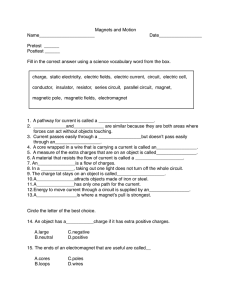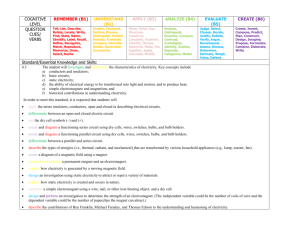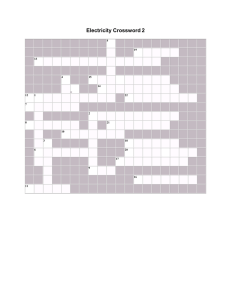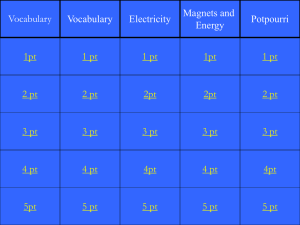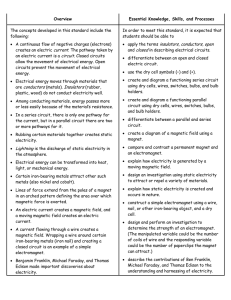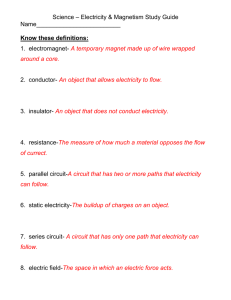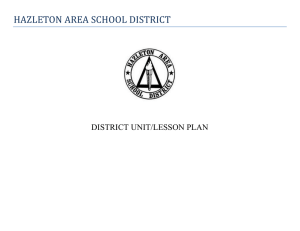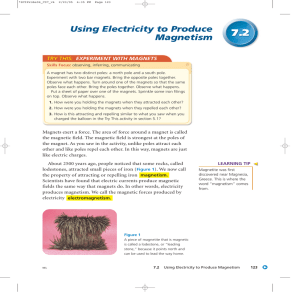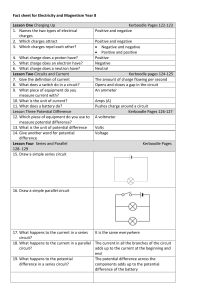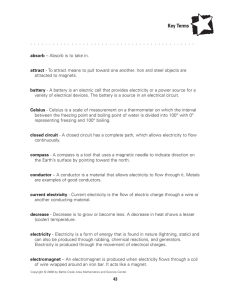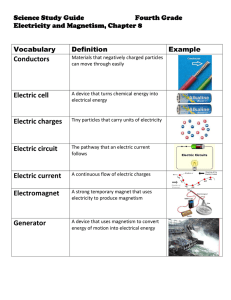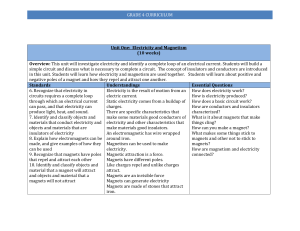Electricity and Magnetism Study Guide
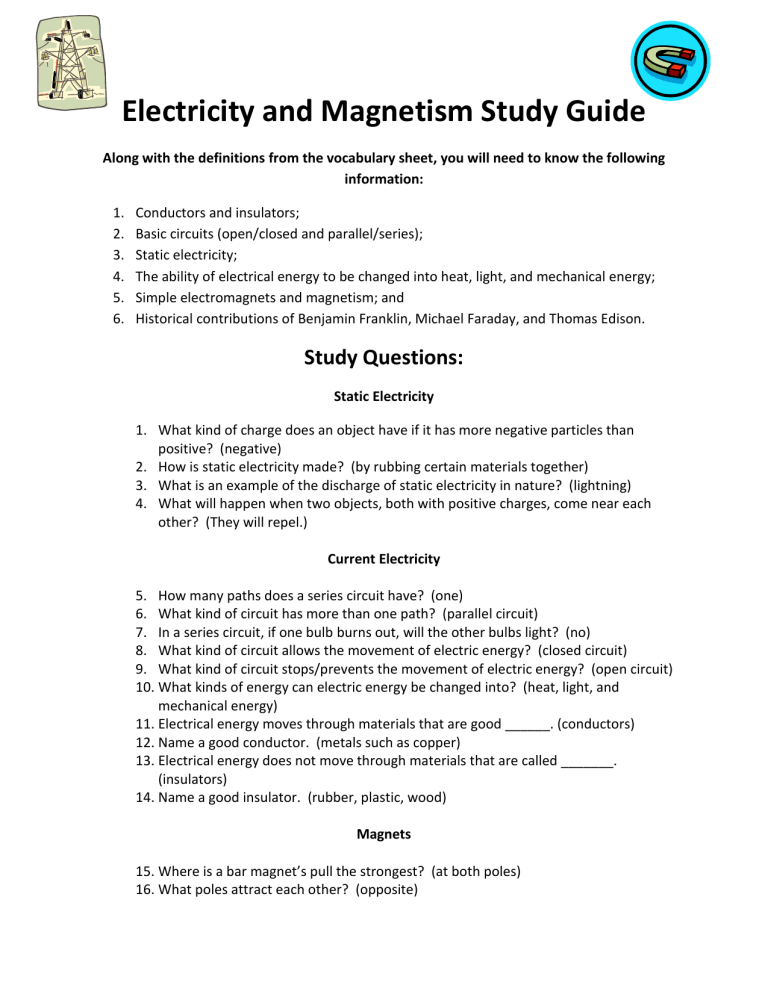
Electricity and Magnetism Study Guide
Along with the definitions from the vocabulary sheet, you will need to know the following information:
1.
Conductors and insulators;
2.
Basic circuits (open/closed and parallel/series);
3.
Static electricity;
4.
The ability of electrical energy to be changed into heat, light, and mechanical energy;
5.
Simple electromagnets and magnetism; and
6.
Historical contributions of Benjamin Franklin, Michael Faraday, and Thomas Edison.
Study Questions:
Static Electricity
1.
What kind of charge does an object have if it has more negative particles than positive? (negative)
2.
How is static electricity made? (by rubbing certain materials together)
3.
What is an example of the discharge of static electricity in nature? (lightning)
4.
What will happen when two objects, both with positive charges, come near each other? (They will repel.)
Current Electricity
5.
How many paths does a series circuit have? (one)
6.
What kind of circuit has more than one path? (parallel circuit)
7.
In a series circuit, if one bulb burns out, will the other bulbs light? (no)
8.
What kind of circuit allows the movement of electric energy? (closed circuit)
9.
What kind of circuit stops/prevents the movement of electric energy? (open circuit)
10.
What kinds of energy can electric energy be changed into? (heat, light, and mechanical energy)
11.
Electrical energy moves through materials that are good ______. (conductors)
12.
Name a good conductor. (metals such as copper)
13.
Electrical energy does not move through materials that are called _______.
(insulators)
14.
Name a good insulator. (rubber, plastic, wood)
Magnets
15.
Where is a bar magnet’s pull the strongest? (at both poles)
16.
What poles attract each other? (opposite)
17.
What poles repel each other? (same)
18.
What are the two names for the magnet’s poles? (north and south)
19.
Create a diagram of a magnetic field between magnets that attract and magnets that repel.
Electromagnets
20.
How can you make an electromagnet? (wrap a current-carrying wire around an iron core)
21.
What are some good ways to control an electromagnet? (Add more coils or more current)
22.
What is the main difference between a bar magnet and an electromagnet? (A bar magnet can’t be turned on and off. An electromagnet is temporary—it can be turned on and off.)
23.
An electric current creates a ___________ field. (magnetic)
24.
A moving magnetic field creates an ______________ current. (electric)
Historical Contributions
25.
Name some important people who studied electricity. (Michael Faraday invented the generator. Ben Franklin conducted an electrical experiment with a kite which led to the development of the lightning rod. Thomas Edison improved the electric light bulb.)
